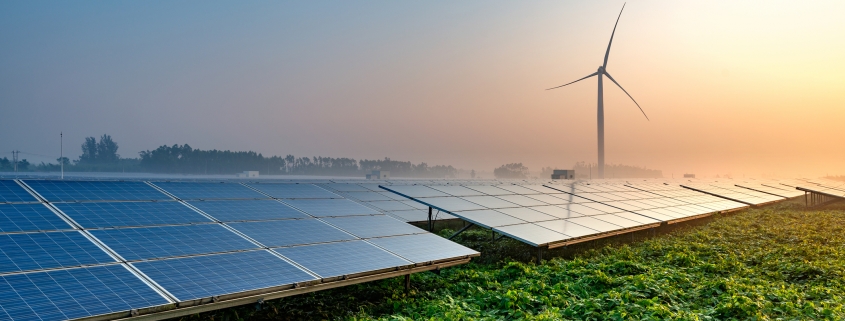Powering a Circular City
Energy is what keeps the world turning round— the lifeblood that powers our daily living. This will hold true in circular cities as well, especially with the many different kinds of technology and artificial intelligence that will need to be powered 24/7. The question is: how would power change in a circular city, both in how it is generated and in how it is received?
Generating Power: Energy Solutions
At its core, the circular city seeks to improve its populous’ health, enhance the environment’s livability, preserve nature, and create less negative impacts to nature and its inhabitants. It will seek power sources that are reliable, renewable, clean, and cause minimal negative impact to the environment. As the search for sustainable and renewable energy alternatives continues, it’s important to bear in mind that every technology we create has an impact of some kind.
Solar: Solar power uses cells to convert sunlight into electricity. This clean, renewable energy is silent, available worldwide, and doesn’t pollute the water, air, or soil. However, solar panels require high upfront costs, expensive and rare materials, require a lot of land space, can cause glare, and are completely dependent on the sun shining.
Wind: Wind turbines convert the blowing wind into electricity. Wind energy is clean, renewable, and doesn’t pollute the air, soil, or water. It is generally low maintenance and inexpensive to build. However, the turbines can be noisy, visually displeasing, require lots of land, harm and kill wildlife like bats and birds, and is reliant upon the wind blowing.
Geothermal: Geothermal power uses heat from deep inside the earth to generate electricity. Geothermal is a renewable energy source that is generally reliable and predictable. It produces smaller amounts of carbon emissions and sulfur than traditional energy methods. However, there are expensive upfront costs, has the potential to cause earthquakes, and is only sustainable if managed properly.
Hydroelectric: Hydroelectric power derives energy from moving water. Essentially, flowing water turns turbines and creates electricity. It is a source of clean, renewable energy, but it is restricted to where water reservoirs are available. However, building dams disturbs natural habitats and force relocations for both people and animals.
There are pros and cons to every energy source. What do you think would be the best solution?
Receiving Power: How will individuals in the populous “pay” for power?
The question that naturally follows is: how will people receive power? In today’s world, there is a clear ownership of energy, and we pay to use power. Do you think people should pay for electricity in a circular city?
In a circular city model, each individual in the populous is expected to contribute their fair share, share their skills, and then reap the rewards of shared community resources. In order to provide equal access to these resources, circular cities become resource-based economies, meaning the planet’s resources are common heritage to all—no one privately owns the natural resources like power, but every human deserves equal access to them without the expectation of monetary payment. Housing, transportation, renewable energy sources, clean water, and organic food would be available to all in this community-based living structure.
Do you see the power grid as a shared community resource? How do you see the future of energy and power without a monetized government system?
We want to hear from you! Comment and join the conversation below!





Leave a Reply
Want to join the discussion?Feel free to contribute!